Solar System
(Our Solar System :Discovery,structure,planets,outer,inner,all planets name)
The
Solar System is the gravitationally-bound system comprising the Sun and
the objects that orbit it, either directly or indirectly. Of those
objects that orbit the Sun directly, the largest
eight are the planets, with the remainder being significantly smaller
objects, such as dwarf planets and small Solar System bodies. Of the
objects that orbit the Sun indirectly, the moons, two are larger than
the smallest planet, Mercury.
 The
Solar System formed 4.6 billion years ago from the gravitational
collapse of a giant interstellar molecular cloud. The vast majority of
the system's mass is in the Sun, with the majority of the remaining mass
contained in Jupiter. The four smaller inner planets, Mercury, Venus,
Earth and Mars, are terrestrial planets, being primarily composed of
rock and metal. The four outer planets are giant planets, being
substantially more massive than the terrestrials. The two largest,
Jupiter and Saturn, are gas giants, being composed mainly of hydrogen
and helium; the two outermost planets, Uranus and Neptune, are ice
giants, being composed mostly of substances with relatively high melting
points compared with hydrogen and helium, called volatiles, such as
water, ammonia and methane. All eight planets have almost circular
orbits that lie within a nearly flat disc called the ecliptic.
The
Solar System formed 4.6 billion years ago from the gravitational
collapse of a giant interstellar molecular cloud. The vast majority of
the system's mass is in the Sun, with the majority of the remaining mass
contained in Jupiter. The four smaller inner planets, Mercury, Venus,
Earth and Mars, are terrestrial planets, being primarily composed of
rock and metal. The four outer planets are giant planets, being
substantially more massive than the terrestrials. The two largest,
Jupiter and Saturn, are gas giants, being composed mainly of hydrogen
and helium; the two outermost planets, Uranus and Neptune, are ice
giants, being composed mostly of substances with relatively high melting
points compared with hydrogen and helium, called volatiles, such as
water, ammonia and methane. All eight planets have almost circular
orbits that lie within a nearly flat disc called the ecliptic.
The
Solar System also contains smaller objects. The asteroid belt, which
lies between the orbits of Mars and Jupiter, mostly contains objects
composed, like the terrestrial planets, of rock and metal. Beyond
Neptune's orbit lie the Kuiper belt and scattered disc, which are
populations of trans-Neptunian objects composed mostly of ices, and
beyond them a newly discovered population of sednoids. Within these
populations are several dozen to possibly tens of thousands of objects
large enough that they have been rounded by their own gravity. Such
objects are categorized as dwarf planets. Identified dwarf planets
include the asteroid Ceres and the trans-Neptunian objects Pluto and
Eris. In addition to these two regions, various other small-body
populations, including comets, centaurs and interplanetary dust clouds,
freely travel between regions. Six of the planets, at least four of the
dwarf planets, and many of the smaller bodies are orbited by natural
satellites, usually termed "moons" after the Moon. Each of the outer
planets is encircled by planetary rings of dust and other small objects.
The
solar wind, a stream of charged particles flowing outwards from the
Sun, creates a bubble-like region in the interstellar medium known as
the heliosphere. The heliopause is the point at which pressure from the
solar wind is equal to the opposing pressure of the interstellar medium;
it extends out to the edge of the scattered disc. The Oort cloud, which
is thought to be the source for long-period comets, may also exist at a
distance roughly a thousand times further than the heliosphere. The
Solar System is located in the Orion Arm, 26,000 light-years from the
center of the Milky Way.
Discovery and exploration
For
most of history, humanity did not recognize or understand the concept
of the Solar System. Most people up to the Late Middle Ages–Renaissance
believed Earth to be stationary at the centre of the universe and
categorically different from the divine or ethereal objects that moved
through the sky. Although the Greek philosopher Aristarchus of Samos had
speculated on a heliocentric reordering of the cosmos, Nicolaus
Copernicus was the first to develop a mathematically predictive
heliocentric system. In the 17th century, Galileo Galilei, Johannes
Kepler, and Isaac Newton developed an understanding of physics that led
to the gradual acceptance of the idea that Earth moves around the Sun
and that the planets are governed by the same physical laws that
governed Earth. The invention of the telescope led to the discovery of
further planets and moons. Improvements in the telescope and the use of
unmanned spacecraft have enabled the investigation of geological
phenomena, such as mountains, craters, seasonal meteorological
phenomena, such as clouds, dust storms and ice caps on the other
planets.
Structure and composition
The
principal component of the Solar System is the Sun, a G2 main-sequence
star that contains 99.86% of the system's known mass and dominates it
gravitationally. The Sun's four largest orbiting bodies, the giant
planets, account for 99% of the remaining mass, with Jupiter and Saturn
together comprising more than 90%. The remaining objects of the Solar
System (including the four terrestrial planets, the dwarf planets,
moons, asteroids, and comets) together comprise less than 0.002% of the
Solar System's total mass.
Most
large objects in orbit around the Sun lie near the plane of Earth's
orbit, known as the ecliptic. The planets are very close to the
ecliptic, whereas comets and Kuiper belt objects are frequently at
significantly greater angles to it. All the planets, and most other
objects, orbit the Sun in the same direction that the Sun is rotating
(counter-clockwise, as viewed from above Earth's north pole). There are
exceptions, such as Halley's Comet.
The
overall structure of the charted regions of the Solar System consists
of the Sun, four relatively small inner planets surrounded by a belt of
mostly rocky asteroids, and four giant planets surrounded by the Kuiper
belt of mostly icy objects. Astronomers sometimes informally divide this
structure into separate regions. The inner Solar System includes the
four terrestrial planets and the asteroid belt. The outer Solar System
is beyond the asteroids, including the four giant planets. Since the
discovery of the Kuiper belt, the outermost parts of the Solar System
are considered a distinct region consisting of the objects beyond
Neptune.
The eight planets of the Solar System (by decreasing size) are Jupiter, Saturn, Uranus, Neptune, Earth, Venus, Mars and Mercury.
Most
of the planets in the Solar System have secondary systems of their own,
being orbited by planetary objects called natural satellites, or moons
(two of which, Titan and Ganymede, are larger than the planet Mercury),
and, in the case of the four giant planets, by planetary rings, thin
bands of tiny particles that orbit them in unison. Most of the largest
natural satellites are in synchronous rotation, with one face
permanently turned toward their parent.
All
planets of the Solar System lie very close to the ecliptic. The closer
they are to the Sun, the faster they travel (inner planets on the left,
all planets except Neptune on the right).
Kepler's
laws of planetary motion describe the orbits of objects about the Sun.
Following Kepler's laws, each object travels along an ellipse with the
Sun at one focus. Objects closer to the Sun (with smaller semi-major
axes) travel more quickly because they are more affected by the Sun's
gravity. On an elliptical orbit, a body's distance from the Sun varies
over the course of its year. A body's closest approach to the Sun is
called its perihelion, whereas its most distant point from the Sun is
called its aphelion. The orbits of the planets are nearly circular, but
many comets, asteroids, and Kuiper belt objects follow highly elliptical
orbits. The positions of the bodies in the Solar System can be
predicted using numerical models.
Although
the Sun dominates the system by mass, it accounts for only about 2% of
the angular momentum. The planets, dominated by Jupiter, account for
most of the rest of the angular momentum due to the combination of their
mass, orbit, and distance from the Sun, with a possibly significant
contribution from comets.
The
Sun, which comprises nearly all the matter in the Solar System, is
composed of roughly 98% hydrogen and helium. Jupiter and Saturn, which
comprise nearly all the remaining matter, are also primarily composed of
hydrogen and helium. A composition gradient exists in the Solar System,
created by heat and light pressure from the Sun; those objects closer
to the Sun, which are more affected by heat and light pressure, are
composed of elements with high melting points. Objects farther from the
Sun are composed largely of materials with lower melting points. The
boundary in the Solar System beyond which those volatile substances
could condense is known as the frost line, and it lies at roughly 5 AU
from the Sun.
The
objects of the inner Solar System are composed mostly of rock, the
collective name for compounds with high melting points, such as
silicates, iron or nickel, that remained solid under almost all
conditions in the protoplanetary nebula. Jupiter and Saturn are composed
mainly of gases, the astronomical term for materials with extremely low
melting points and high vapour pressure, such as hydrogen, helium, and
neon, which were always in the gaseous phase in the nebula. Ices, like
water, methane, ammonia, hydrogen sulfide, and carbon dioxide, have
melting points up to a few hundred kelvins. They can be found as ices,
liquids, or gases in various places in the Solar System, whereas in the
nebula they were either in the solid or gaseous phase. Icy substances
comprise the majority of the satellites of the giant planets, as well as
most of Uranus and Neptune (the so-called "ice giants") and the
numerous small objects that lie beyond Neptune's orbit. Together, gases
and ices are referred to as volatiles.
Sun
The
Sun is the Solar System's star and by far its most massive component.
Its large mass (332,900 Earth masses) produces temperatures and
densities in its core high enough to sustain nuclear fusion of hydrogen
into helium, making it a main-sequence star. This releases an enormous
amount of energy, mostly radiated into space as electromagnetic radiation peaking in visible light.
The
Sun is a G2-type main-sequence star. Hotter main-sequence stars are
more luminous. The Sun's temperature is intermediate between that of the
hottest stars and that of the coolest stars. Stars brighter and hotter
than the Sun are rare, whereas substantially dimmer and cooler stars,
known as red dwarfs, make up 85% of the stars in the Milky Way.
The
Sun is a population I star; it has a higher abundance of elements
heavier than hydrogen and helium ("metals" in astronomical parlance)
than the older population II stars. Elements heavier than hydrogen and
helium were formed in the cores of ancient and exploding stars, so the
first generation of stars had to die before the Universe could be
enriched with these atoms. The oldest stars contain few metals, whereas
stars born later have more. This high metallicity is thought to have
been crucial to the Sun's development of a planetary system because the
planets form from the accretion of "metals
Inner planets
The inner planets. From left to right: Earth, Mars, Venus, and Mercury (sizes to scale).
The
four terrestrial or inner planets have dense, rocky compositions, few
or no moons, and no ring systems. They are composed largely of
refractory minerals, such as the silicates, which form their crusts and
mantles, and metals, such as iron and nickel, which form their cores.
Three of the four inner planets (Venus, Earth and Mars) have atmospheres
substantial enough to generate weather; all have impact craters and
tectonic surface features, such as rift valleys and volcanoes. The term
inner planet should not be confused with inferior planet, which
designates those planets that are closer to the Sun than Earth is (i.e.
Mercury and Venus).
Mercury
Venus
 Venus
(0.7 AU from the Sun) is close in size to Earth (0.815 Earth masses)
and, like Earth, has a thick silicate mantle around an iron core, a
substantial atmosphere, and evidence of internal
geological activity. It is much drier than Earth, and its atmosphere is
ninety times as dense. Venus has no natural satellites. It is the
hottest planet, with surface temperatures over 400 °C (752°F), most
likely due to the amount of greenhouse gases in the atmosphere. No
definitive evidence of current geological activity has been detected on
Venus, but it has no magnetic field that would prevent depletion of its
substantial atmosphere, which suggests that its atmosphere is being
replenished by volcanic eruptions.
Venus
(0.7 AU from the Sun) is close in size to Earth (0.815 Earth masses)
and, like Earth, has a thick silicate mantle around an iron core, a
substantial atmosphere, and evidence of internal
geological activity. It is much drier than Earth, and its atmosphere is
ninety times as dense. Venus has no natural satellites. It is the
hottest planet, with surface temperatures over 400 °C (752°F), most
likely due to the amount of greenhouse gases in the atmosphere. No
definitive evidence of current geological activity has been detected on
Venus, but it has no magnetic field that would prevent depletion of its
substantial atmosphere, which suggests that its atmosphere is being
replenished by volcanic eruptions.Earth
Earth (1 AU from the Sun) is the largest and densest of the inner planets, the only one known to have current geological activity, and the only place where life is known to exist. Its liquid hydrosphere is unique among the terrestrial planets, and it is the only planet where plate
tectonics has been observed. Earth's atmosphere is radically different
from those of the other planets, having been altered by the presence of
life to contain 21% free oxygen. It has one natural satellite, the Moon,
the only large satellite of a terrestrial planet in the Solar System.
Mars
Mars
(1.5 AU from the Sun) is smaller than Earth and Venus (0.107 Earth
masses). It has an atmosphere of mostly carbon dioxide with a surface
pressure of 6.1 millibars (roughly 0.6% of
that of Earth). Its surface, peppered with vast volcanoes, such as
Olympus Mons, and rift valleys, such as Valles Marineris, shows
geological activity that may have persisted until as recently as 2
million years ago. Its red colour comes from iron oxide (rust) in its
soil. Mars has two tiny natural satellites (Deimos and Phobos) thought
to be captured asteroids.
Asteroid belt
The donut-shaped asteroid belt is located between the orbits of Mars and Jupiter.
Asteroids
except for the largest, Ceres, are classified as small Solar System
bodies and are composed mainly of refractory rocky and metallic
minerals, with some ice. They range from a
few metres to hundreds of kilometres in size. Asteroids smaller than
one meter are usually called meteoroids and micrometeoroids
(grain-sized), depending on different, somewhat arbitrary definitions.
The
asteroid belt occupies the orbit between Mars and Jupiter, between 2.3
and 3.3 AU from the Sun. It is thought to be remnants from the Solar
System's formation that failed to coalesce because of the gravitational
interference of Jupiter. The asteroid belt contains tens of thousands,
possibly millions, of objects over one kilometre in diameter. Despite
this, the total mass of the asteroid belt is unlikely to be more than a
thousandth of that of Earth. The asteroid belt is very sparsely
populated; spacecraft routinely pass through without incident.
Ceres
Ceres
(2.77 AU) is the largest asteroid, a protoplanet, and a dwarf planet.
It has a diameter of slightly under 1,000 km, and a mass large enough
for its own gravity to pull it into a spherical
shape. Ceres was considered a planet when it was discovered in 1801,
and was reclassified to asteroid in the 1850s as further observations
revealed additional asteroids. It was classified as a dwarf planet in
2006 when the definition of a planet was created.
Asteroid groups
Asteroids
in the asteroid belt are divided into asteroid groups and families
based on their orbital characteristics. Asteroid moons are asteroids
that orbit larger asteroids. They are not as clearly distinguished as
planetary moons, sometimes being almost as large as their partners. The
asteroid belt also contains main-belt comets, which may have been the
source of Earth's water.
Jupiter
trojans are located in either of Jupiter's L4 or L5 points
(gravitationally stable regions leading and trailing a planet in its
orbit); the term "trojan" is also used for small bodies in any other
planetary or satellite Lagrange point. Hilda asteroids are in a 2:3
resonance with Jupiter; that is, they go around the Sun three times for
every two Jupiter orbits.
The
inner Solar System also contains near-Earth asteroids, many of which
cross the orbits of the inner planets. Some of them are potentially
hazardous objects.
Outer Solar System
The
outer region of the Solar System is home to the giant planets and their
large moons. The centaurs and many short-period comets also orbit in
this region. Due to their greater distance from the Sun, the solid
objects in the outer Solar System contain a higher proportion of
volatiles, such as water, ammonia, and methane than those of the inner
Solar System because the lower temperatures allow these compounds to
remain solid.
Outer planets
The
four outer planets, or giant planets (sometimes called Jovian planets),
collectively make up 99% of the mass known to orbit the Sun. Jupiter
and Saturn are together over 400 times the mass of Earth and consist
overwhelmingly of hydrogen and helium; Uranus and Neptune are far less
massive (<20 Earth masses each) and are composed primarily of ices.
For these reasons, some astronomers suggest they belong in their own
category, "ice giants". All four giant planets have rings, although only
Saturn's ring system is easily observed from Earth. The term superior
planet designates planets outside Earth's orbit and thus includes both
the outer planets and Mars.
Jupiter
Jupiter
(5.2 AU), at 318 Earth masses, is 2.5 times the mass of all the other
planets put together. It is composed largely of hydrogen and helium.
Jupiter's strong internal heat creates
semi-permanent features in its atmosphere, such as cloud bands and the
Great Red Spot. Jupiter has 69 known satellites. The four largest,
Ganymede, Callisto, Io, and Europa, show similarities to the terrestrial
planets, such as volcanism and internal heating. Ganymede, the largest
satellite in the Solar System, is larger than Mercury.
Saturn
Saturn
(9.5 AU), distinguished by its extensive ring system, has several
similarities to Jupiter, such as its atmospheric composition and
magnetosphere. Although Saturn has 60% of Jupiter's volume, it is less
than a third as massive, at 95 Earth masses. Saturn is the only
planet of the Solar System that is less dense than water. The rings of
Saturn are made up of small ice and rock particles. Saturn has 62
confirmed satellites composed largely of ice. Two of these, Titan and
Enceladus, show signs of geological activity. Titan, the second-largest
moon in the Solar System, is larger than Mercury and the only satellite
in the Solar System with a substantial atmosphere.
Uranus
Uranus
(19.2 AU), at 14 Earth masses, is the lightest of the outer planets.
Uniquely among the planets, it orbits the Sun on its side; its axial
tilt is over ninety degrees to the ecliptic. It has
a much colder core than the other giant planets and radiates very
little heat into space. Uranus has 27 known satellites, the largest ones
being Titania, Oberon, Umbriel, Ariel, and Miranda.
Neptune
Solar System
 | 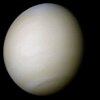 | |||||
| Sun (star) | Jupiter (planet) | Saturn (planet) | Uranus (planet) | Neptune (planet) | Earth (planet) | Venus (planet) |
| Mars (planet) | Ganymede (moon of Jupiter) | Titan (moon of Saturn) | Mercury (planet) | Callisto (moon of Jupiter) | Io (moon of Jupiter) | Moon (moon of Earth) |
 | ||||||
| Europa (moon of Jupiter) | Triton (moon of Neptune) | Pluto (Kuiper belt object) | Titania (moon of Uranus) | Rhea (moon of Saturn) | Oberon (moon of Uranus) | Iapetus (moon of Saturn) |
| Charon (moon of Pluto) | Umbriel (moon of Uranus) | Ariel (moon of Uranus) | Dione (moon of Saturn) | Tethys (moon of Saturn) | Ceres (belt asteroid) | Vesta (belt asteroid) |
| Enceladus (moon of Saturn) | Miranda (moon of Uranus) | Proteus (moon of Neptune) | Mimas (moon of Saturn) | Hyperion (moon of Saturn) | Phoebe (moon of Saturn) | Janus (moon of Saturn) |
| Epimetheus (moon of Saturn) | Lutetia (belt asteroid) | Prometheus (moon of Saturn) | Pandora (moon of Saturn) | Mathilde (belt asteroid) | Helene (moon of Saturn) | Ida (belt asteroid) |
| Phobos (moon of Mars) | Deimos (moon of Mars) |


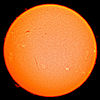






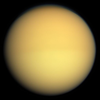

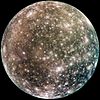
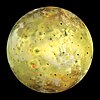

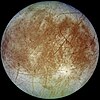


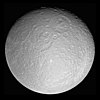



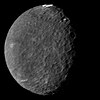


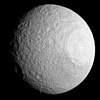





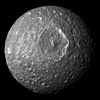



















0 comments:
Post a Comment